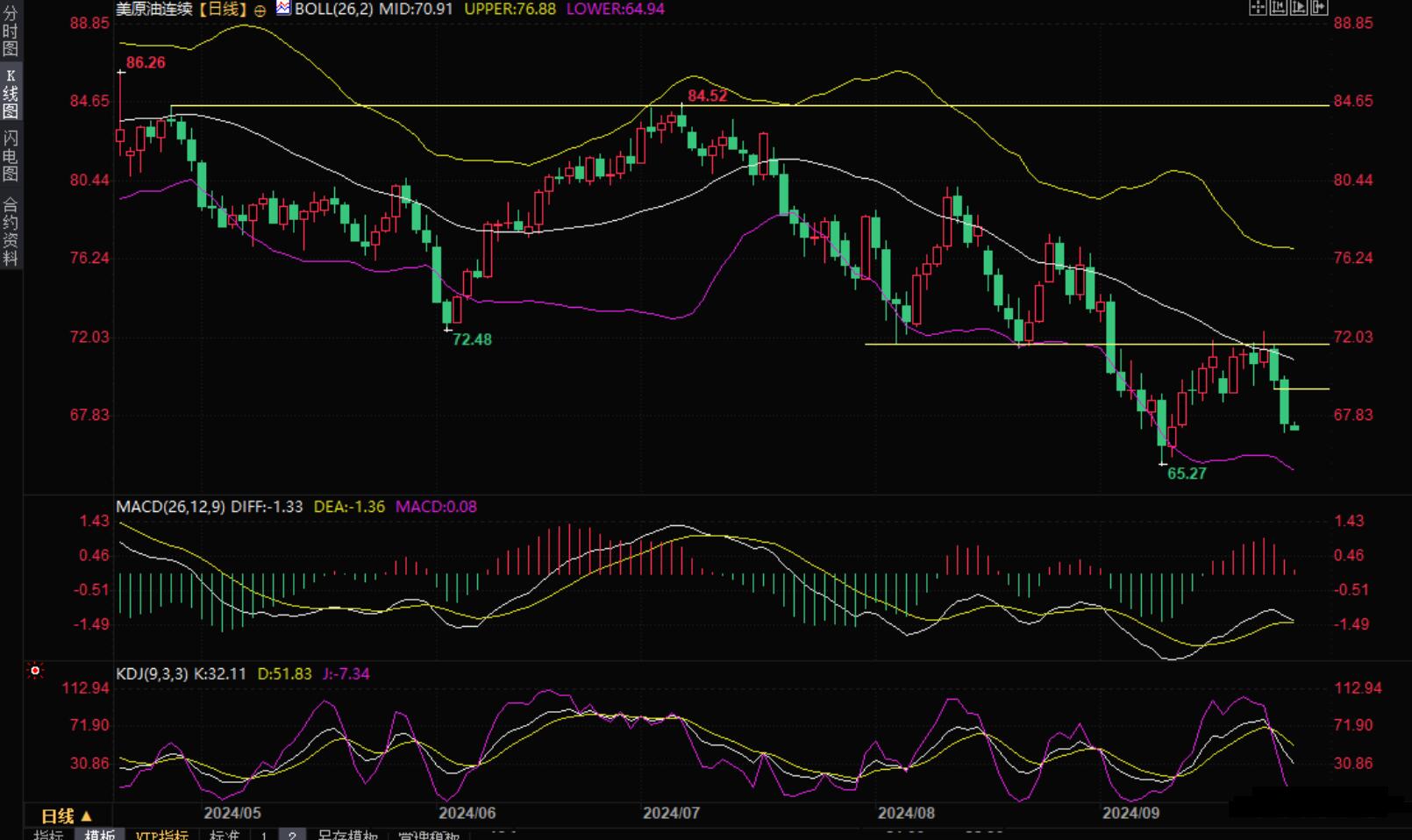Crude oil trading analysis: OPEC+will increase production as planned in December, with oil prices falling 3% to a new low in over two weeks
At the beginning of the Asian market on Friday (September 27th), international oil prices continued to decline, with US crude oil currently falling 0.5% and trading around $67.30 per barrel. On Thursday, oil prices plummeted by more than 3%, setting a new record for over two weeks. Earlier, the Financial Times reported that Saudi Arabia, the world's top crude oil exporter, would abandon its $100 price target and prepare to increase production with OPEC member countries and allies in December.
Brent crude oil futures fell $1.86, or 2.53%, to settle at $71.60 per barrel on Thursday. US crude oil closed down $2.02, or 2.90%, at $67.67 per barrel on Thursday.
The Financial Times reported on Thursday, citing sources familiar with the situation, that Saudi Arabia is preparing to abandon its unofficial crude oil price target of $100 per barrel and is preparing to increase production.
In addition, two OPEC+sources stated on Thursday that the organization will increase oil production in December, as the impact of increased production will be minimal if some member countries increase their production cuts in September and the following months to compensate for overproduction plans.
Phil Flynn, Senior Analyst at Price Futures Group, said, "They overreacted to the Financial Times' report
PVM analyst Tamas Varga said that the report is about the pre planned cancellation of production cuts, which, if implemented, will increase crude oil supply by 180000 barrels per day per month.
OPEC+, consisting of OPEC and oil producing allies led by Russia, has been cutting oil production to support oil prices.
OPEC+is an alliance of oil producing countries composed of the Organization of the Petroleum Exporting Countries (OPEC) and allied countries such as Russia. The organization plans to increase production by 180000 barrels per day in December, as part of OPEC+'s plan to withdraw from recent production cuts.
Two OPEC+member countries, Iraq and Kazakhstan, have pledged to reduce production by an additional 123000 barrels per day in September and further reduce production in the coming months to compensate for the excess oil production beyond the agreed quota.
An OPEC+source said about the production increase in December, 'When these countries' compensation plans and production figures for September become clear, they can increase production because the impact of the increase can be ignored.'.
The Saudi Government Communications Office and OPEC headquarters did not immediately respond to requests for comment.
An OPEC+source said that the increase in production in December was not to regain market share, but rather a gradual cancellation of voluntary production cuts by a few countries.
Oil ministers from some OPEC+major oil producing countries are scheduled to meet on October 2nd to assess market conditions and are not expected to make any policy changes.
Russian Deputy Prime Minister Alexander Novak told Thursday that OPEC+'s plan to gradually cancel production cuts from December has not changed.
The third OPEC+source said that ministers may meet again in November.
However, due to increased supply from other oil producing countries (especially the United States) and weak demand growth in major Asian countries, oil prices have fallen by nearly 6% so far this year.
It is worth mentioning that on Thursday, the United States' initial jobless claims performed quite well, while Israel refused international calls for a ceasefire with Hezbollah, ignored its biggest ally in Washington, and continued to launch airstrikes; Asian major governments promise to introduce more stimulus policies; This series of positive news has failed to help oil prices reverse their downward trend, indicating significant short-term downward pressure on oil prices.
From a technical perspective, US crude oil has continued to fall after being blocked near key positions such as the August 21 low of 71.46 and the resistance of the Bollinger Bands. The KDJ dead cross is running well, and the MACD red bar is shrinking. Short term oil prices tend to be bearish, and the future may test support near the September 10 low of 65.27. Whether it can further break through remains to be seen. Pay attention to the resistance near the 5-day moving average of 69.34. If it can rise above this level, it will weaken the short-term bearish signal.

Tips:This page came from Internet, which is not standing for FXCUE opinions of this website.
Statement:Contact us if the content violates the law or your rights
